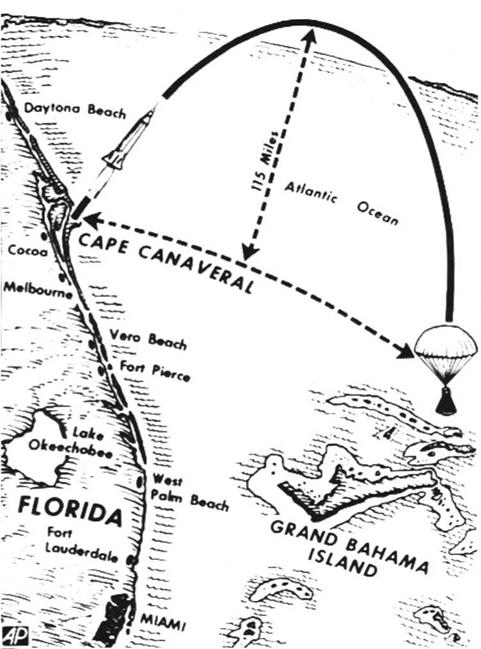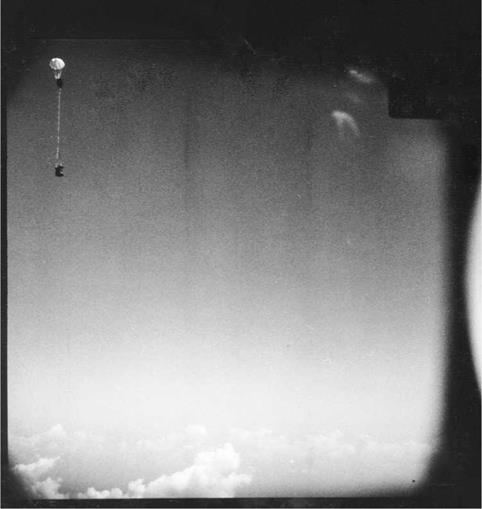THE FINAL HURDLE
As Shepard headed to a splashdown in the Atlantic, there were still many things that had to occur, and his concentration was now on the parachute system. As he recalled in the book, We Seven:
The periscope jutted out again at about 21,000 feet, and the first thing I saw against the sky as I looked through it was the little drogue chute which had popped out to stabilize my fall. So far, so good. Then, at 15,000 feet, a ventilation valve opened up on schedule to let cool fresh air come into the capsule. The next thing I had to sweat out was the big 63-foot chute, which was due to break out at 10,000 feet. If it failed to show up on schedule I could switch to a reserve chute of the same size by pulling a ring near the instrument panel. I must admit that my finger was poised right on that ring as we passed through the 10,000- foot mark. But I did not have to pull it. Looking through the periscope, I could see the antenna canister blow free on top of the capsule. Then the drogue chute went floating away, pulling the canister behind it. The canister, in turn, pulled out the bag which held the main chute and pulled it free. And then, all of a sudden, after this beautiful sequence, there it was – the main chute stretching out long and thin – it had not opened up yet – against the sky. But four seconds later the reefing broke free and the large orange and white canopy blossomed out above me.
It looked wonderful right from the beginning. I stared at it hard through the periscope for any signs of trouble. But it was drawing perfectly, and a glance at my rate-of-descent indicator on the panel showed that I had a good chute. It was letting me down at just the right speed, and I felt very much relieved. I’d have a nice, easy landing [24].
|
This photograph records the release of Freedom 7’s drogue chute, with the antenna canister dangling below. (Photo: NASA) |
At 1,000 feet up, Shepard could see the water clearly below. The heat shield had dropped four feet as planned, to deploy the collapsible accordion-like landing bag that was stowed between it and the capsule. This perforated bag skirt of rubberized glass fiber filled with air to help to cushion the impact with the water. It provided an additional measure of shock absorption for the astronaut. Immediately after landing the parachute would be automatically disconnected, and the capsule had sufficient buoyancy to float. The landing bag and heat shield were designed to act together like a sea anchor and keep the capsule upright.

|
With seconds to go before Freedom 7 splashed in the relatively calm green water of the Atlantic, Alan Shepard braced himself for impact.











